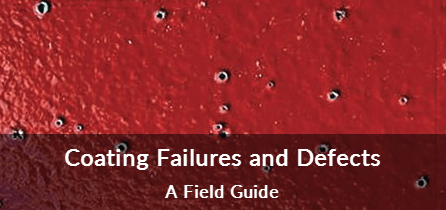What Does
Intercoat Mean?
Intercoat refers to the coat between the substrate and top coat, or between any two coats. Normally, the top coat is applied on the primer and an intercoat exists in between the top coat and primer. The top coat bonding with the intercoat or substrate depends on intercoat adhesion. Poor intercoat adhesion causes coating failure and leads to corrosion.
The failure of one coat to adhere to an underlying coat is known as "intercoat delamination".
Free Coating Failures and Defects Guide – Sponsored by Fitz's Atlas 2

Click here to download your free guide!
Corrosionpedia Explains Intercoat
An intercoat is the coat that remains under another coat. An intercoat may be formed when one coat is applied following another coat, or the top coat is applied as a maintenance coating after some time. The compatibility of the intercoat with another coat is essential. Incompatibility among the different coats leads to intercoat delamination and coating failure.
Solvent-free coatings and coal tar epoxy coatings are subject to intercoat delamination. When the curing of the coatings is done by either internal or exterior forces, delamination is evident. The temperature of application is also critical. When moisture or water penetrates the interface, intercoat adhesion is lost and intercoat delamination occurs.
Intercoat adhesion is normally known as the adhesion to other coatings. Sanding is necessary to achieve proper intercoat adhesion to increase surface roughness before applying any coat. A vehicle from the top coat can penetrate the pores in the primer after a top coat is applied. This vehicle provides a mechanical anchor to promote intercoat adhesion. High surface tension of the coat also causes poor intercoat adhesion and the development of film defects such as crawling, cratering and leveling.
Low temperature and high humidity interfere with intercoat adhesion. The glossy and smooth surface reduces intercoat adhesion and leads to delamination. It is also necessary to prevent contamination of the first coat before applying the second to get good intercoat adhesion and better corrosion protection.